* (restored/expanded)
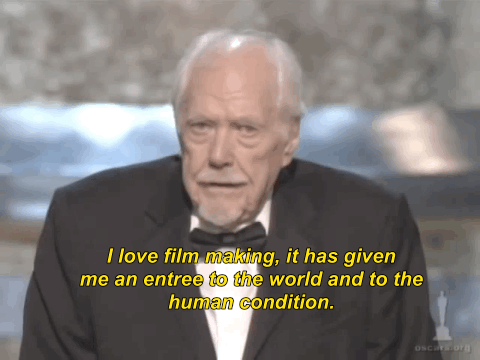
‘One of the most salient characteristics in Altman films is the narrative with a large cast of characters. From MASH to Gosford Park his films repeatedly set numerous stories in motion – with so many actors that it’s hard to count them: 40 in Nashville, 48 in A Wedding, another 40 in Short Cuts, over 60 in both Prêt-à-Porter and The Player, with many “playing themselves”. In these films he paints large canvases with motion that results more from the edited interconnections among scenes in different stories than from the logic of any overall story development. Altman has consistently expressed his hostility to narrative causality and closure, and his films dramatically display an antipathy to straightforward, clearly delineated, and causally logical narratives. An analysis, for instance, of the scenes cut from Gosford Park reveals that shots and scenes potentially explaining character behaviour and motive were systematically removed from the final cut of the film. Throughout his career Altman has relegated motivation to the “subliminal reality” of conflicting, indeterminate, vague, inexpressible characterological desire. We look for explanation of human action, he says, “But there doesn’t have to be one”. These films ultimately asked to be read not as realistic fictions but as expressive portraits and murals of modern life.
‘On one hand, these multiply plotted films become more like reality, where lives intersect in random, chance and discontinuous ways without apparent reasons. Narrative coherence gives way to fragmentary puzzles. On the other hand, Altman has also regularly stated his craft to be that of a painter or a musician. Individual characters, then, bits and pieces of action, interact within the spaces and across the times of his films like tonal signatures or pigments of paint. Character motive, personal relationships, causal behaviour become ambiguous, diffuse, implicit.
‘A central characteristic of the art cinema is its liberation of the visual and spatial systems of film from the logical system of narrative. Altman’s large casts and diffuse stories actively assist in this process where he says that story itself asks to be read in 3 Women (1977) like a dream, in Kansas City like jazz, in The Company like a pas de deux, in Gosford Park like a tapestry. The editing rhythm of McCabe & Mrs. Miller follows from the musical rhythm of the Leonard Cohen’s music subsequently used on the sound track. Vincent and Theo seems to be motivated by a desire to follow the trail of these two bothers in order that the director can paint with his camera the same people and places of Van Gogh’s paintings. Consequently, part of the difficulty in following the complex play of stories in Altman’s films is their modernist presumption that meaning emerges from the simultaneous perception of connections among images and phrases in space that have no consecutive relationship to each other in time. Each of the 24 roles in Nashville is a colour whose meaning resides in its proximity to adjacent colours and its various intensities within the figure the film makes. Similarly the multiple fragments in Short Cuts coalesce ultimately not just as the threads of disrupted stories but as the musical accompaniment to the classical, new age, and jazz compositions that shape the whole film.
‘Altman’s films strikingly illustrate that the art cinema is a poetic as well as a narrative art. The sombre palette of gold and green in Images (1972); the restless, sensuous and ambiguous zoom and pan shots in Nashville and 3 Women; the pointillistic final sequence in the blizzard in McCabe and Mrs. Miller; the exhilarating colour and music of fashion in Prêt-à-Porter, the compulsive repetition of red and black throughout The Gingerbread Man), the stunning contrast of primary colours during the ballet performances with the honey-brown spaces of rehearsal and life in The Company – these qualities reflect the eye of a painter. Altman has consistently asserted that the goal of his films is an emotional rather than an intellectual effect: “I look at film as closer to a painting or a piece of music; it’s an impression… an impression of character and total atmosphere… The attempt is to enlist an audience emotionally, not intellectually.”
‘Narrative hardly disappears in Altman’s film, despite his self-description as a painter. In another aspect of the art cinema, Altman’s film aggressively interrogate popular narrative genres, almost as though he has been involved in a research and development project systematically to revise Hollywood’s major product lines. Images is a psychological thriller. MASH is a combat film. The Long Goodbye is a hard-boiled detective film. Nashville is a musical. McCabe & Mrs. Miller and Buffalo Bill are westerns. Quintet is science fiction. A Perfect Couple and Popeye are musical comedy romances. The Gingerbread Man is film noir. These well-known narrative forms provide the director platforms from which to display other concerns about the nature of human behaviour and its cinematic observation. Their stories seldom provide the context for significant, heroic action; rather they reveal spaces that enclose and forces that act upon a multiplicity of selves. Graphic and rhythmic dimensions of editing and cinematography frequently come unstuck from generic logic. Story moves psychologically from apparent external to obscure internal motivation. Plot becomes a project open-ended, ironic and ambiguous. Unfamiliar and unusual actors play against the star system, and stars play against their box-office personas. The innovative expressivity of the auteur director produces a metaphoric, often moody and contradictory, generally oblique discourse rather than the effaced zero-degree of style in the classical narrative cinema.’ — Senses of Cinema
___
Stills













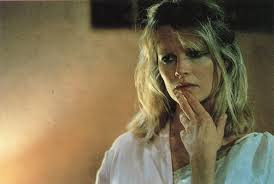








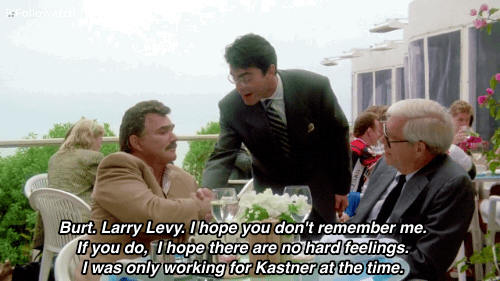



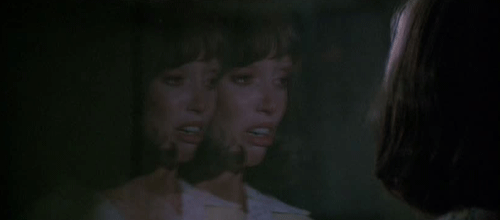





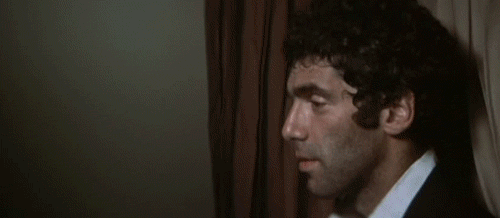






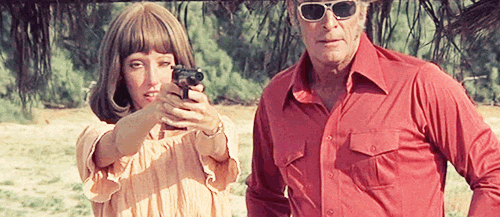




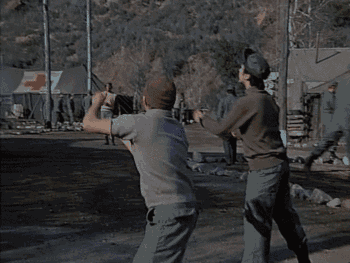











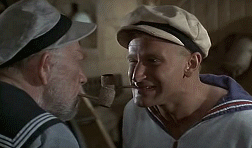
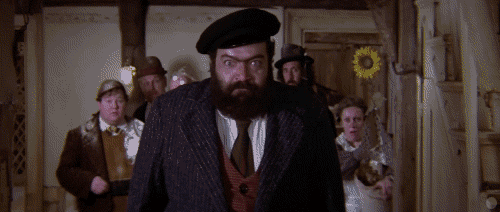







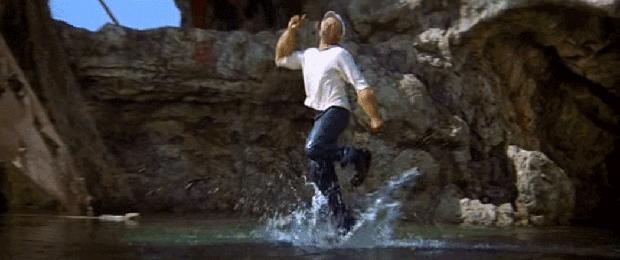

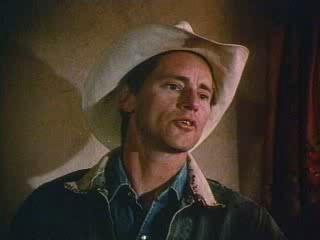
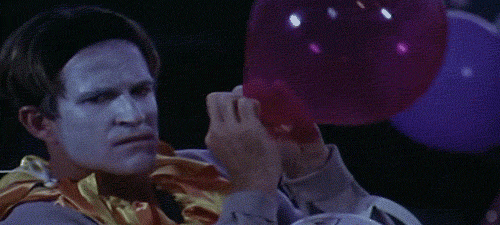
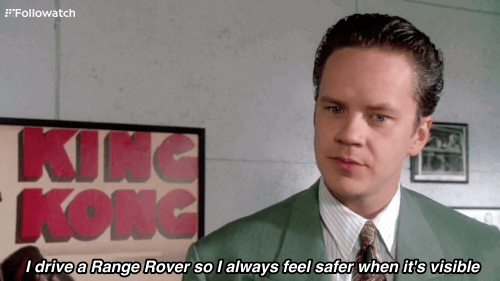







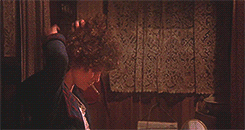










_____
Further
Robert Altman @ IMDb
Robert Altman @ The Criterion Collection
Books on Robert Altman
Robert Altman interviewed @ BOMB Magazine
Podcast: Robert Altman’s son Michael talks about him
’10 Robert Altman Films You May Not Know’
‘Home Movies: Robert Altman, Hollywood Renegade’
‘6 Filmmaking Tips From Robert Altman’
‘How Robert Altman turned Popeye into an Altman movie’
Fuck Yeah Robert Altman
‘Revisiting the Strange and Wonderful Soundtrack to Robert Altman’s Nashville’
Martin Scorcese on Robert Altman
‘Robert Altman: The Hollywood Interview’
‘What I’ve Learned: Robert Altman’
‘Ronee Blakley Looks Back at Robert Altman’s Masterpiece, “Nashville”‘
‘The Robert Altman film Altman never wanted you to see’
‘”We don’t like the twins” – On Robert Altman’s 3 Women’
____
Extras
Robert Altman talks about movie stuff
Independent Focus with Robert Altman
Robert Altman on RASHOMON by Kurosawa
Cinefile : Robert Altman Parts 1 – 3 (1996)
______
Interview
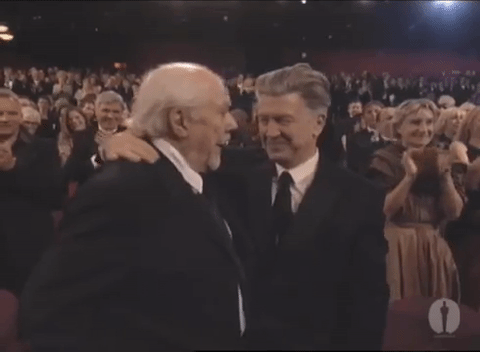
You had to hustle particularly hard during the ’80s…
Robert Altman: It appears that way to you and to most people, but that was a very creative time for me. I did three or four theatre pieces with no screenplays. Making stage adaptations like Streamers and Come Back To The Five & Dime, Jimmy Dean, Jimmy Dean was experimental. It was fun. For me, it was a time of success.
Yet people dismiss that period, overlooking the fact that your filmed plays are very cinematic.
RA: Right. I made them like movies, but they took place in one space. I don’t understand why people say you have to open a stage play up.
Is it a common misperception that you turned to these small-scale theatre pieces because the critical failure of Popeye burned you?
RA: I make no apologies for Popeye. Behind M*A*S*H, it’s my biggest hit. It got maligned by the critics because it wasn’t Superman. It wasn’t about special effects and it wasn’t made for 14-year-old boys. The majority of films are made for 14-year-old boys; I don’t know where they get the eight bucks to get in. It’s hush money from the parents.
You’d never worked with a major star until McCabe & Mrs Miller. So how did you handle Warren Beatty?
RA: Well, he was difficult. Warren was a control freak who was used to being in charge. I woke up one morning and it was snowing, much like today, so I said, “Hey, let’s do so-and-so.” Warren refused to come out of his dressing room. He said, “Well, by the time we get the shots, this is all going to be gone and we’ll have to redo it.” I said, “We’ve nothing else to do. Let’s just try it.” It snowed for 11 straight days and we got our whole final scene.
Beatty’s always been renowned for demanding multiple takes. You shoot on the hoof. Did that cause any problems?
RA: You bet. Take the scene where McCabe is drunk and talking to himself. We did about seven takes and I said, “Okay, that’s great.” He said, “I want to do another one.” So we did 12 or 13 takes. He said, “I want to do some more.” I said, “Well, I’m going to bed because I’ve got an early call tomorrow.” I left him with Tommy Thompson, my second-unit director. They shot 10 more [laughs].
You’ve always tried to flip Hollywood convention. Is that why you cut away from the love scene between Beatty and Julie Christie? After all, every studio exec wants “a little sex”…
RA: It wasn’t something I was interested in showing. Sex is very private. You don’t call up the neighbours and say, “Hey, Sally and I are gonna be at it tonight. Bring a chair over and sit and watch us!”
McCabe deconstructed the Western. The Long Goodbye did much the same for the detective story. Discuss…
RA: Everybody’s seen all those films. I like them to see my film and go, “Oh, we’re going to see another one of those…” Then I say, “No, you’re not.”
Naturally, you pissed off the Raymond Chandler purists. Did you expect the backlash?
RA: The purists said I didn’t do what Chandler did. I never intended to. What’s the point of a rehash? And when people say that Elliott Gould is not a good Philip Marlowe, they’re not talking about Philip Marlowe. They’re talking about Humphrey Bogart.
Your movies are renowned for their use of overlapping dialogue…
RA: I started that with M*A*S*H and continued it with McCabe & Mrs Miller. Eventually, on California Split, we made the first eight-track, so I had stuff going down on different tracks. Everybody was miked. On Gosford Park, I had 64 tracks!
How do you feel about the adjective ‘Altmanesque’? It’s now applied to any multi-layered movie with an ensemble cast…
RA: I don’t know what “Altmanesque” means, though I suppose I’m flattered by it. I mean, Paul Thomas Anderson openly said to me, “All I’m doing is ripping you off.” But that kid Anderson is really, really talented. He’s a real artist, our best hope.
Filmmaking’s changed so much since your arrival in the late ’60s. Any other new voices you admire?
RA: I don’t know how Fernando Meirelles made City Of God. It’s so courageous, so truthful. I think it’s the best picture I’ve ever seen – all I could think of was Gillo Pontecorvo’s The Battle Of Algiers. I also liked Sofia Coppola’s film, Lost In Translation. It’s all about nothing but it’s beautifully done. I’d rather watch a movie like that than Cold Mountain. For Christ’s sake, I’ve seen that picture about 50 times before. There’s nothing there that interests me.
You were 43 when you made Countdown. You’d served on bombers during World War Two. Does that life experience help the work?
RA: It all goes in.
So how do you feel about the new wave of MTV directors? Do you agree with Fred Ward’s character in The Player: their movies are just “Cut, cut, cut”?
RA: They serve their art as they see fit.
Do you think that the ’70s could have been cinema’s last Golden Age?
RA: These things are on a cycle, but it’ll probably be the last Golden Age in my lifetime. Back then, the decisions had gone from studio executives to the artists. I remember doing Brewster McCloud for some guy, I forget his name, who had just taken over MGM. It was an outrageous film about a boy who wanted to fly. This guy didn’t know what the fuck I was talking about, but he went ahead and let me make it anyway.
Why have so many of your peers burned out?
RA: Well, I don’t think they’ve dried up, but it’s easy to get into a groove or a rut. I mean, I was offered millions – millions – of dollars to do a M*A*S*H sequel… But why would I do that? It was the same with Short Cuts and Nashville. I won’t be restricted. Just look what happens every time some Mexican guy goes out and makes a great film for $65,000. They bring him in, give him $65 million and Ben Affleck. He falls on his face.
Do you think your reputation as a maverick could be partly responsible for the Oscar missing from your trophy cabinet?
RA: They’ll never give me an Oscar. And I sincerely, honestly don’t care. I always turn up when I’m nominated and it would be nice to get one, but to win one would be bad luck. It comes with too much expectation. It would be the end.
__________________
19 of Robert Altman’s 41 films
___________________
That Cold Day in the Park (1969)
‘By 1969, Robert Altman was a prolific director of episodic television, craving a transition to feature filmmaking, but facing a steep climb toward his goal. His first few feature outings (the 1957 independent feature The Delinquents, a documentary about James Dean from the same year, and the 1968 space thriller Countdown), had not sufficiently captured the imaginations of audiences or the film industry to sustain a feature career. That Cold Day in the Park represented a daring gambit in this context: quiet and cryptic, it displayed Altman’s iconoclastic fascinations: a sensitivity to schisms within normalcy, a fascination with female subjectivity, and the construction of atmospheres as expressive of psychological states. Par for the course, the film was received with ambivalence and disdain by many critics, and did not meet with commercial success; hardly the calling card that Altman needed.’ — UCLA Film Archive
Trailer
Behind the scenes
______________
Brewster McCloud (1970)
‘Brewster McCloud is more complex and more difficult than MASH. For one thing, we don’t have the initial orientation we had in MASH, where we knew we were in the Army and we knew what the uniforms stood for and what was going on in the operating room. Those hooks helped us unsort the narrative. Brewster may not even have a narrative. If you want me to explain what Brewster is about. I’m not sure it’s about anything. I imagine you could extract a subject from it, and I’ll try that the next time I see it. But I wonder if the movie isn’t primarily style; if Altman doesn’t have a personal sense of humor and wants his directing style to reflect it. One could, of course, get into a deep thing about birds and wings and freedom, but why?’ — Roger Ebert
Trailer
Excerpt
______________
McCabe & Mrs. Miller (1971)
‘Ostensibly an anti-Western that eschewed the romanticism of John Ford, Altman’s film remained indebted to Howard Hawks for its subdued, atmospheric interior lighting (photographed by Vilmos Zsigmond, who went on to shoot Michael Cimino’s The Deer Hunter and Heaven’s Gate and Steven Spielberg’s Close Encounters of the Third Kind and is still working as he approaches 84), reminiscent of the kerosene-lit sets of Hawks’s El Dorado. (Altman also owes something to Hawks for his experimental use of multilayered soundtracks, but also to Ford for his use of songs, in this case those of Leonard Cohen.) This contrasts markedly with the long climax, shot in snowy streets in broad daylight. As I wrote in my 1976 book on Westerns, McCabe is photographed “as though it were underwater…. Its consistent use of subdued colors is ultimately rather lovely in its ugliness. Altman insists on the smells, dirt, and grossness of the frontier….” I went on to say that the death of Beatty’s “seedy entrepreneur…argues persuasively that not only is there no room left for a Western hero, but there isn’t even room for an anti-hero.” In a sense, Beatty’s McCabe is the perfect surrogate for Altman, possessed (sometimes blindly) by indefatigable ambition.’ — MoMA
Trailer
Excerpt
Finale
_________
Images (1972)
‘Sandwiched between two of his most celebrated artistic triumphs (McCabe and Mrs. Miller on one side, The Long Goodbye on the other), Images is something of a doodle – an intense, psychosexual thriller in the vein of Repulsion or Don’t Look Now (released the following year) – but a wildly entertaining, impressively acted doodle nonetheless. The movie centers around (and is narrated by, in some of Altman’s very best writing) Cathryn (Susannah York), a wealthy children’s book author. One night at their home (which looks like a quasi-futuristic hobbit hole, in the way only ’70s architecture and design can), Cathryn receives a series of disturbing phone calls indicating that her husband (Rene Auberjonois) is having an affair. When he returns home she confronts him, and he seemingly changes into another man altogether. (In one dizzyingly impressive shot the camera starts on York talking to the other man, played by Marcel Bozzuffi, who suddenly transforms into Auberjonois. The choreography boggles the mind.) Her husband suggests that they retreat to a cabin in the countryside, which is never a great idea, and the madness and intensity only escalates, with Cathryn tempted by adultery and plagued with visions of the mystery man and her own devilish doppelganger. Images is embroidered with pervasive weirdness – everything from the driving gloves Auberjonois is always wearing to sequences later in the movie when a rotting corpse lies on the kitchen floor, more a nuisance than anything else. In many ways a kind of companion piece to the similarly dreamlike 3 Women, Images is anchored by an utterly fearless, compulsively watchable performance by York (she bares body and soul) and Altman’s razor-sharp screenplay.’ — Indiewire
Excerpt
____________
The Long Goodbye (1973)
‘There’s an unmistakable sense of nostalgia that permeates Robert Altman’s seldom-seen 1973 neo-noir The Long Goodbye, an air of reminiscence highlighted by the film’s title track, a nifty, pliable, lovelorn little number composed by John Williams and Johnny Mercer that gets incorporated endlessly throughout the movie, evoking sporadic familiarity, even though we rarely hear the same version twice. It transforms itself, from scene-to-scene, into a flimsy piece of supermarket Muzak, an ivory-tickled barroom ditty, even a castanet-laden flamenco. It’s a caressing torch ballad one moment and a marching band’s funeral hymn the next. The song, in all its reimagined incarnations, continually threatens to embed itself into the viewer’s mind, but just as quickly eludes any tighter hold. It’s as though the film, in its own increasingly weary, tumbledown sort of way, is nostalgic for the tune, longing for something that comes back but is never the same.’ — The Film Experience
Trailer
Excerpt
______________
Thieves Like Us (1974)
‘Keith Carradine is good looking and young and Shelley Duvall is appealingly strange and wan. During a scene where she emerges naked from the bath and climbs into bed with him, it’s sensual and odd, because it doesn’t play out with the predictable rhythm of a love scene. Altman understands that what makes Duvall attractive is her otherworldliness, and her dialogue rolls along like she’s visiting from another planet, only vaguely curious of the details in our world because she has other things to do. In McCabe and Mrs. Miller, Altman found an earthiness in Warren Beatty and Julie Christie, two stars transformed into character types. Thieves Like Us is all character. Altman shows sensitivity to these outsiders, without false sentiment or even commentary. He watches from the sidelines, with a taste for irony—if you linger on an Altman wide shot long enough, without punctuation marks for action, it all becomes a little funny. These bank robber movies all end the same way: badly for our heroes. And we know this going in, so spending two hours in the company of these delightfully strange birds is, in a word, affecting. The world of Thieves Like Us is beautiful and strange, in all its stunning everydayness.’ — Slant Magazine
Excerpt
_______________
California Split (1974)
‘Robert Altman’s most overlooked gem, California Split charts the friendship of two inveterate gamblers, Elliott Gould’s devil-may-care rabble-rouser and George Segal’s writer, as they wend their way through a series of casino misadventures. Theirs is a bond first forged over a game of poker in which Segal covers for Gould’s con and—after they properly meet-cute at a bar, drunkenly failing to name all seven of Snow White’s dwarfs—suffer a parking lot beat down for their earlier swindle. It’s a bromance predicated on a shared addiction to the thrill of the high-stakes win, and Altman dramatizes their union with his usual overlapping-dialogue acuteness. Conversations flow so naturally and messily that the film exudes a ragamuffin charm, bolstered by the director’s canny use of quick cutaways and evocative framing.’ — The AV Club
Excerpt
____________
Nashville (1975)
‘What more is there to say about Robert Altman’s 1975 magnum opus Nashville? I mean really, it’s been held as a benchmark of not only 1970s cinema but American cinema as a whole since its release, and before the movie even came out it had critical luminaries like the one-and-only Pauline Kael throwing platitudes left and right at it from her review’s first paragraph with whoppers like “I’ve never before seen a movie I loved in quite this way: I sat there smiling at the screen, in complete happiness. It’s a pure emotional high, and you don’t come down when the picture is over; you take it with you.” As hyperbolic as that seems it’s an appropriately excessive statement for a fittingly excessive movie—that has twenty-four main characters and a nebulous-at-best plot, mind you—and one that I happen to pretty much agree with. Nashville is the type of movie that covers you like some sort of a cinematic blanket, never smothering you or your emotions but swaddling them enough in its grasp until it pulls itself knowingly away from you in its jarring grand finale. It is a singular film from a singular director.’ — Criterion Cast
Trailer
Excerpt
Final scene
________________
Buffalo Bill and the Indians, or Sitting Bull’s History Lesson (1976)
‘Robert Altman was often ahead of his time–once at the cost of being behind himself. Buffalo Bill and the Indians, a snorting exposé of the U.S. predilection for buying into heroic myths, opened on July 4, 1976. Clearly the film was positioned as the ultimate bicentennial event, Altman-style. But Altman had already delivered that a year earlier: the splendiferous, deeply disenchanted yet exhilarating Nashville. Both Nashville and Buffalo Bill are films about America-as-show business, hucksterism, and the rare miracle of performance. But everything Altman got so thrillingly right in Nashville, which teems with life and mystery and widescreen dynamism, came out flatfooted and obvious in Buffalo Bill, a cramped, smirky inside joke that ends up being on the joker. The setting is the base camp for Buffalo Bill Cody’s Wild West Show, where the blustering Indian fighter of legend is gearing up for his latest national tour. Apart from sharpshooter Annie Oakley (Geraldine Chaplin) and her great friend, the Sioux chieftain Sitting Bull (Frank Kaquitts), the show is populated by phonies and opportunists. Biggest phony of all is Cody (Paul Newman), whose fame has been based more on the penny-dreadful scribblings of Ned Buntline (Burt Lancaster) than on any real accomplishments; even his long blond tresses are fake. Altman and cowriter Alan Rudolph (working from a play by Arthur Kopit) thump their insights about the Establishment’s feet of clay as if they were breaking-news bulletins instead of countercultural clichés. Only the occasional ineffably mysterious Altman zoom shot offers relief.’ — Richard T. Jameson
Trailer
___________
3 Women (1977)
‘When asked whether he considers himself an “auteur” director, Altman has said he is to some degree a primary creator, in the sense implied by that term, and to some degree a “filter,” considering ideas offered by others as filmmaking proceeds. For a deeply personal project like 3 Women, his own instincts clearly take first place. Yet his dream would not have been effectively realized if he hadn’t been able to tune many collaborators in to his own intuitive wavelengths. This in itself makes 3 Women a quintessential specimen of Altman cinema, propelled by evanescent reveries of his own and inventive contributions from cast and crew. In the end, 3 Women emerged as such a seamless weave of image, sound, story, and character that no plot summary can do it justice. Ideally, it should be watched and pondered more than once, since many moviegoers find the film so utterly outside the cinematic frameworks they’re familiar with that they wonder if its tenuous narrative (especially the deliberately indefinite ending) has passed them by, or isn’t really there in the first place.’ — David Sterritt
Trailer 1
Trailer 2
____________
A Wedding (1978)
‘When it was first released A Wedding received a cooler reception than director Robert Altman was used to with previous films Nashville and 3 Women. It is frenetic and confusing with Altman himself confessing, “It probably had too many characters and it gets a little unwieldy.” With no fewer than 48 significant speaking parts, that was something of an understatement. However, even with its flaws, this is one of Altman’s funniest and most ebullient films. Ostensibly Robert Altman’s aim in this 1978 comic free-for-all was to top his own Nashville by doubling his cast of leading players from 24 to 48. The film concentrates on the aftermath of an upscale Chicagoland wedding, and it certainly has its moments. But the facileness of this “exposé” of the upper middle class adds up to a lot of cheap shots–watchable enough, but considerably less than the sum of its parts. Among the 48: Carol Burnett, Desi Arnaz Jr., Amy Stryker, Vittorio Gassman, Geraldine Chaplin, Mia Farrow, Paul Dooley, Lillian Gish, Lauren Hutton, John Cromwell, Pat McCormick, Howard Duff, Dina Merrill, Nina Van Pallandt, John Considine, and Viveca Lindfors.’ — Jonathan Rosenbaum
Trailer
_________
Quintet (1979)
‘In the year 1979, director Robert Altman teamed with star Paul Newman to present one of the bleakest post-apocalyptic and dystopian cinematic visions ever forged, the wintry Quintet. Set well into a fictional future ice age of devastating “global cooling,” Quintet was not received warmly by either film critics or audiences at the time of the film’s theatrical release, and that perception has remained largely unchanged today. Indeed, Quintet is not an easy or particularly fun film to experience. The narrative moves at an almost glacial pace and the action features long periods of bracing, uncomfortable silence. In addition to these qualities, Altman’s feature boasts a kind of overt “icy” visual palette, with out-of-focus “cold” atmosphere encroaching visibly on the four corners of the frame. This unique, misty canvas is actually an ideal reflection of the film’s existential crisis: that mankind is being suffocated spiritually and physically by the re-glaciation of all corners of the planet. For some viewers, this misty, frost-bitten visual presentation will add immeasurably to the creeping sense of bleakness and claustrophobia Altman toils so assiduously to generate. For others, the effect may only serve to annoy or even distance one from the action on-screen.’ — John Kenneth Muir
Trailer
Excerpt
_________
Popeye (1980)
‘I first watched Altman’s comic-strip musical in a Milwaukee cinema within a few weeks of my sixth birthday, in December 1980. Baffled and bored by it at the time, I have more distinct memories of the pizza dinner my family shared afterward. But viewed again after Altman’s death, Popeye stands as a worthy entry in the director’s filmography for its charm, its gently countercultural spirit, and its performance by Shelley Duvall as Olive Oyl, the role—as so many critics noted—she was born to play. Remarkably faithful to the look, rhythm, and spirit of E. C. Segar’s Thimble Theater comic strips, in which the character originally appeared, Popeye, like its antecedents Dick Tracy and Sin City, stands as a testament to the challenges—and rewards—of translating a comic kit and caboodle to film.’ — The Believer
Trailer
Excerpt
Excerpt
______________
Come Back to the Five and Dime, Jimmy Dean, Jimmy Dean (1982)
‘The first of Robert Altman’s adaptations of stage plays introduced his admirably rigorous, enormously fertile approach to the question of turning theatre into something properly cinematic. Ed Graczyk’s play depicts the 1975 reunion, two decades after James Dean’s death in the Texan desert nearby, of a group of women who used to be members of his fan club; as they reminisce about the past and reflect on the present, various truths emerge to sometimes comic, sometimes painful effect. Crucially, Altman never ‘opens out’ the action but uses the many sightlines provided both by his characteristically prowling camera and by a mirror on the wall of his single dime-store set to reveal and illuminate the cracks in the masks of his garrulous characters. And the performances of his almost entirely female cast are uniformly superb – Cher’s, especially, being a revelation.’ — Bfi
Trailer
Excerpt
___________
Streamers (1983)
‘The film’s flaws are more than a little obvious—and likely derived in large part from the play. For all the director’s zooming in and shooting through windows and into mirrors, the production feels hopelessly stagy, but given the one-room setting and its magnifying of the screenplay’s inherent claustrophobia, this staginess actually works in the film’s favor. Rather, especially in the retrospect of 27 (film) or 35 (play) years, Streamers’s discussions of race and sexuality don’t hold up particularly well, their effect dissipated by a certain quaintness in the play’s understanding of homosexuality, by Rabe’s desire to pack as much socially relevant material into his work as it’ll take, and by Altman’s penchant for tinting his minority characters (Richie, Carlyle) with ugly stereotyped traits. But what elevates the film above a dated topical discussion is Altman’s imagining of the army barracks as a hothouse environment where tensions and fears play out in oddly manic outbursts—and his direction of his actors accordingly. The filmmaker, following Rabe, conceives of the army base as a testing ground for the American experiment, where a diverse group of people is forced to come together in a spirit of mutual beneficence. In the wake of Vietnam (or Reagan), however, such an experiment must result in failure, so that, while Altman allows for moments of kindness between the characters, the final result can only be a meltdown as potentially apocalyptic as it is inevitable.’ — Slant Magazine
Excerpt
_______________
Fool For Love (1985)
‘Fool For Love is not one of Robert Altman’s most popular films, nor is it among his most successful films (box office wise), nor is it considered to be among his greatest films period. It was submitted into the Cannes Film Festival, not because it was a great film, but because it had big names attached. I’ll come right out and say that the general consensus of Fool For Love is that it’s bad. Not terrible, just bad. One might speculate that something was lost in the transfer of actors and director. The original director was Sam Shepard, himself. The stars of the play were Ed Harris and Kathy Baker. Perhaps people couldn’t imagine anyone else in the role? Well, changing directors and actors never harmed Elia Kazan’s A Streetcar Named Desire! I can’t say too much about Fool For Love, because it’s not a very popular film. Where does it stand today? Well, it still manages to hold a 75% on Rotten Tomatoes, however, most of the critics who liked it did not love it, they just found mild appeal. Fool For Love also holds a contradictory 5.7 on IMDb at the moment. Fool For Love is not a classic, it is simply an Altman film.’ — Every Robert Altman Film
Excerpt
_______________
Vincent & Theo (1990)
‘The trailer to Vincent and Theo (1990) proclaims that this film is “a portrait by Robert Altman”. Indeed, this biopic of artist Vincent Van Gogh (Tim Roth) and his younger brother Theo (Paul Rhys) is a beautifully filmed illustration of the men behind the now-famous paintings. In one scene, the camera caresses golden sunflowers swaying in a field. Close-ups of the flowers fill the frame and create the illusion of a sunny painting, not so different from Van Gogh’s many still-lifes of a vase of sunflowers. The camera next tracks the artist, literally out standing in his field, as he attempts to portray the flowers’ glory. Moments like this make Vincent and Theo a cinematographically mesmerizing film.’ — Pop Matters
Excerpt
Robert Altman and the making of VINCENT & THEO
______________
The Player (1992)
‘With irony and enthusiasm, Altman goes Hollywood, then plays Hollywood against itself, piling up and then undermining movie conventions, as if The Player, in addition to dramatizing the fight between a writer and an executive, is itself, in its choices, the mongrel product of that fight. And in fact, it is: the film begins with a slate dropped before the camera (“Action!”) and ends as Griffin, pulling up to that cozy cottage, buys a writer’s pitch called The Player. But is it a sellout? Whose film is it? The studio’s or the artist’s? The Player asked that question in 1992, on the crest of a great resurgence of independent film in America and, within Hollywood, a healthy influx of independent-minded filmmaking—a mini renaissance that lasted almost two decades before the market collapsed in 2008 and fearful franchise thinking erased from the theatrical market the sorts of small- and mid-budget movies that turn on the strengths of their screenwriters and directors. Today, when it’s the IP (intellectual property) and not the script, or the director, or even the actor, that gets the movie made, when films are green-lit before they are written, and studios, I keep hearing, hire weaker directors because they’re easier to control, I think of that meeting, midway into The Player, the morning after Griffin Mill has killed a writer, when he muses aloud to a roomful of colleagues, “I was just thinking what an interesting concept it is to eliminate the writer from the artistic process. If we can just get rid of these actors and directors, maybe we’ve got something here.”’ — Sam Wasson
Trailer
Excerpt
The Player One on one with Robert Altman
______________
Ready to Wear (1994)
‘Altman seems to have missed the point: that fashion itself is surreal without all that cinematic effort. People slipping in dog’s mess? Not half as devastating as someone dropping a felt pen on your new Prada shoes. Why mock up a fashion show in a Métro (been there, done that years ago) but fail to film the moment at Jean-Paul Gaultier’s show when the audience started choking on fumes from the fake snow? ‘I don’t know what to say – it’s a comedy, very droll. It’s not a critique of fashion, it is a total fiction,’ said Gaultier, who made his entrance in a tiger-print jacket with Lauren Bacall. ‘I was cut!’ claimed Bacall. ‘A lot of the scenes that made my character add up to more were gone.’ She plays a fashion editor deposed for a younger model (while Sally Kellerman and Tracey Ullman are competing for the favours of the photographer). For fashion folks, the film just didn’t come off – either as an extended skit, or as a bitchy or brutal dissection of the industry. Although Altman started the evening by telling the audience to ‘giggle and give in and enjoy it’, the laughter came in trickles rather than torrents. Ironically, the most riveting bits were the polished excerpts from the real fashion shows.’ — The Guardian
Excerpt
Excerpt
______________
Gosford Park (2001)
‘No director has ever been better than Altman at providing the audience with bearings to find its way through a large cast. The sense of place is also palpable in this film; the downstairs and attic floors were entirely constructed on sound stages by production designer Steven Altman, Altman’s son, who also supervised the real country house used for the main floors. Andrew Dunn’s photography is sumptuous upstairs, while making the downstairs look creamy and institutional. The editor, Tim Squyres, must have been crucial in keeping the characters in play. “Gosford Park” is the kind of generous, sardonic, deeply layered movie that Altman has made his own. As a director he has never been willing to settle for plot; he is much more interested in character and situation, and likes to assemble unusual people in peculiar situations and stir the pot. Here he is, like Prospero, serenely the master of his art.’ — Roger Ebert
Excerpt
Excerpt
*
p.s. Hey. ** H, Thank you. I hope ‘Jubliee’ lived up! ** Kyler, Hi, K. Thanks, man, and immortality would be awfully nice under certain circumstances such as not spending all of eternity lying in bed hooked up to tubes, etc. ** David Ehrenstein, Hi. I personally don’t believe for one second that Trump makes anything impossible. ** Chris Cochrane, Chris! Buddy boy! Thanks a bunch. Very cool about your collaboration with Yvonne. I don’t think you told me about that upcoming and amazing trip. That’s quite a whoa there. Great, Chris! We finish the film work in late September. Don’t know about a NYC visit at the moment. Something will come up, I guess. Oh, so, not having heard a word, I’m beginning to guess that ‘Them’ at MoMA is a dead duck? Take care. Love, me. ** Steve Erickson, Hi. Understood. Really you should talk about you want here, and I’ll do the same, and it’ll all be fine. Yes, I don’t know where whoever wrote that article got the idea that Camus is a philosopher. Knowing him just a teeny bit due to our sharing the same French publisher, I’m sure he was happy to play along. Great about the Eliza Hittman interview. I’m curious to see her film and read your conversation. I would agree that if you actually want to write, ambient music is usually a better or at least more supportive friend. ** Bernard, Hi, Bernard! Awfully glad to hear that you’re in a solid, ongoing work mode. You don’t want to turn away from the Trump stuff even for a moment? Yikes. Right, the eclipse. I don’t think it’s playing over here. Oh, well, the title of the GIF work/post was the warning? ** Tosh Berman, Hi. Yeah, I get the great difficulty of tuning all of that out. Being somewhat removed over here, it’s possible to see that rightly or wrongly also as at least partly an addiction and question whether, if that’s true, an addiction can be a place from which to be a productive adversary. But that’s just wondering on my part. I like to wonder. Thank you about the GIF work. Much appreciated. ** _Black_Acrylic, Thanks, Ben. Yeah, I was thinking about how combining a haunted house effect and a rave effect might be exciting. Your print is beautiful! Excellent work, maestro! It’s really lovely! ** Nick Toti, Thank you, Nick. Yeah, I feel really super lucky to have stumbled into a longterm collaboration with Gisele for sure. We’ve been working together long enough that the way we work has evolved a lot, and we’ve managed to create works that are significantly different from one another, which is quite exciting. Like our last piece ‘The Ventriloquist Convention’ is extremely text-heavy and conversational, and for our new piece, which is all dance and no language, I’m creating a hidden, unspoken narrative with characters and events and things, so it’s about the language construction part being as functional and invisible as possible. Very challenging work for a writer, for which I feel very, very grateful. Well, if you do get to the point where you want to collaborate with a choreographer, let me know because Gisele could be a great help in suggesting people or making the introductions and so on. It won’t surprise you that unwatchable is a magic word for me, so that sounds amazing. Cool, thanks for naming the Kobek book. I’ll find it somehow. Writing in that way, journalistically or whatever, for your column, … I can imagine. Nonfiction is the hardest kind of writing for me by a million miles. I’ve basically given it up because I find it so taxing. Great to talk with you! ** Dóra Grőber, Hi! Thanks, Dóra! I wonder if it’s even possible to wrap one’s mind around something like that. I think for me it’s more that I think about it until I can’t get my thoughts to be any more understanding, and then I just let it become something that becomes a feeling that comes and goes forever. It’s very strange. Well, on the post about SCAB, we could do it in a number of ways, I guess. I guess the very best would be a post you made about it, but I understand that that’s complicated. You could write a kind of intro, and then send me the project, and I can lift examples to use in the post. Really, whatever is the most interesting and least difficult option for you would be fine. And great! My day ended up being quiet because I wasn’t needed at the dance rehearsals. So I just caught up on stuff. Nothing exciting, but it was okay. Today … we’ll see. And your today? ** Tender prey, Hi, Marc! Oh, thank you so so much about the GIF work. Yeah, I experimented and made it in a very different way than I usually make those works, almost in a backwards way or something. It was very interesting to find a new possible entrance into that work. Anyway, I so appreciate your words. And, yes, it was so fantastic to get to see you guys and hang out as much we got to over here! I’m glad you’re back safely in London and that it’s treating you respectfully. Love, me. ** Jamie, Hey! Thank you so much! Really! Yes, I think I’ve reached a point in the GIF work where I feel somewhat quite comfortable with the medium and fairly knowledgeable about how the GIF effect works and can’t and how they can be organized to have the effects I want to achieve, and that’s allowing me to play and push the limits in a way I couldn’t until recently. Its very interesting, and thank you very much! I’m good. No, Gisele didn’t need me at the rehearsals yesterday. Maybe today, though, I’m waiting for her commanding text. Ultimately I think chops are really just dedication. I mean, I really have no visual sense much at all and no chops there, but, for instance, I dedicated myself to making the GIF works, and I think my concentration and desire to make that work is the entire reason they work as much as they do. Well, Danielewski continues to publish books, and they’re ever more formally daring, which is impressive, but, for me, they pretty much remain conceptual works and the texts are just like the graph of the idea, which is okay but they don’t have the absorbing and involving quality that I think he’s going for. I don’t know. Have you found a doable animator yet? My day is a question mark at the moment. It might be another slow-y. Can’t tell. And yours? Mud-encrusted, shower-needing love, Dennis. ** Chris dankland, Thank you, man! What you got and liked is what I wanted and hoped. Cool! And I love and am grateful for you seeing that great Blakeian idea in my stuff. Yeah, in my dreams, at least. Thanks, Chris, that’s really wonderful to hear. And thank you ever so much as for sending me a guest-post! Wow! I’ll go find it and put it together and write to you. Fantastic, thank you so kindly, my friend! Hugs right back. ** Misanthrope, Hi. Well, as the title hopefully indicated, it was indeed a ride or ‘ride’. Just meet SolidGold for a coffee and a blab-fest, and then you’ll know. And I guess pay for his coffee. Interesting bugaboo. But then you seemingly like or don’t have a problem with the commodification of sex involved in how pop stardom is aware of and manipulative of the audience’s libido. So you like the ad but not the product? Random question. ** Jeff J, Hey, Jeff. Thanks really a lot. Yeah, as I was explaining above, I conceptualized and constructed that one in a way I hadn’t come at the GIF work before, and I do feel like it opened some new area or areas or something. Really, thanks so much. That means a lot to me coming from you. What do you mean by ‘re-creating some of your favorite poems, novels, and short stories posts from the old blog — maybe expanded even’? I’m not sure what you mean entirely? Which posts are you talking about? Yes the Cortazar images arrived, and I’ve restored your old post, and it will be up here next week. Thanks so much for that! ** Okay. For reasons I don’t remember I decided to restore and slightly expand the until-now dead Robert Altman Day. I hope it was a good idea. See you tomorrow.




 Now available in North America
Now available in North America 
You may be right about Trump, Dennis. Last night there was a massive memorial for Heather Heyer — the woman who was killed by the Nzi. Thousands of people in the streets of Charlottesville holding candles and singing “We Shall Overcome.”
My favorite Altmans are “Three Women,” “The Long Goodbye,” “McCabe and Mrs. Miller,” “The Company,” “Quintet” and “O.C. & Stiggs” Met him a few times. The last was at a screening of Mike Hddges’ sadly ignored “I’ll Sleep When I’m Dead” starring Malcolm McDowell. He was about to make “The Company” in which he cast McDowell as a ballet impresario. “I know nothing about ballet,” he told me, “But it’s all these pretty girls in tights — how can I resist?”
And now Mrs. Ryuichi Sakamoto with a song by Stephen Foster arranged by Van Dyke Parks
I’m really glad that I posted on Facebook yesterday about almost getting gay-bashed. People I know in real life popped up to talk about similar experiences (in some cases, they sent me private messages.) I know I’m lucky that what happened to me didn’t actually end in violence, but it was still fucking horrible and for some reason, it’s really no consolation to me that I didn’t get beaten up. I think it’s important for gay men to talk about these experiences; from the response I got to that post, they seem pretty common. A lot of people think that big cities are safe spaces for LGBT people, but really, I think this is often an illusion – this happened to me in Washington, DC. It seems screwed up to me now that when this happened, I never told anyone, but at the time, I didn’t want my parents of friends to worry about me or think I was living a dangerous lifestyle. And I wasn’t – this simply happened to me because I was walking through a gay neighborhood! When I came out to my parents, my father’s first words were “You’re in for a rough life.” That’s part of the reason I never told him about this till yesterday – I didn’t want to confirm his prejudices about gay life.
Hey Dennis – Nice Altman day. His streak of great (and interesting even when off the mark) movies in the 1970s was really something.
I was lobbying to restore some of your old posts like ‘My 50 Favorite Novels,’ ‘My 25 Favorite Short Stories,’ ‘My 50 Favorite Poems’ etc. that you had done over the years. Those probably come from the earlier days of the blog? Hope that clarifies.
There’s a very cool essay about photography in novels that includes a detailed dive into Mira Corpora and how Michael Salerno’s opening and ending images work in the context of the novel. It also examines work by Nicholas Rombes, Konrad Bayer, Wright Morris, and Dubravka Ugrešiƈ. The PDF is viewable here: http://almostisland.com/spring_2017/pdf/five_novels_five_photographs.pdf
The number of films Altman made in the ’70s and the fact that almost all of them are very good is pretty striking. I took a class in college called “Mythological Images in Popular Culture” taught by a professor who had written a book arguing for the importance of psychedelic mushrooms to human evolution. He showed us THREE WOMEN and IMAGES, which I had never seen before, (I was 18 at the time.) He also showed us equally strange films by Roeg and Fellini, which totally made sense given his interest in mushrooms, but weirdly, he showed DIRTY HARRY as well and had bizarre theories about it, such as that Harry and Scorpio had sex offscreen at one point. But it was kind of cool to see DIRTY HARRY in a context so far removed from the usual political debates around it.
SECRET HONOR is my favorite post-70s Altman film. I keep meaning to buy the Criterion disc. A friend of mine has seen it about 10 times and says he’s figured out what Nixon says to a point where his ranting and conspiracy theories makes sense.
Also, THREE WOMEN is getting a week-long run at the Film Society of Lincoln Center starting Friday. I own the Criterion DVD and have seen it several times, but I’m definitely going.
Hey Dee! Did your question mark of a day end up answered? Hope it was in the affirmative. What did you get up to?
As I type I’m in the bath with a huge slice of cake given to us by our neighbours when we informed them that water was pouring from their flat into ours. What nice people?!
We’ve hooked up with an animation company that I don’t think seem very good, and my job atm is to find an illustrator/designer to try and rework our existing characters, as the animation company’s redesign attempts were nothing short of weird and not good weird. More and more I’m feeling like Jonathan and I are existing in different dimensions as he agreed that this company’s showreel wasn’t so good, but then said he def wants to go with them and keeps going on about the good job they’re going to do. It’s weird.
The only Altman films I’ve seen are Short Cuts, which highly impressed me as a youngster, and Come Back to the Five and Dime… , which I think I liked, but now seems like a very fuzzy memory. I’d like to see a few of those listed above, definitely McCabe and Mrs Miller. Thanks for the post.
You’re welcome about the gif work. It was a really special experience (especially on a train) & I’m going to be going back to it again this evening and see what else happens.
I got to go to Glasgow work. Hope you have a super duper Friday!
Bonged out love,
Jamie
Thanks, Dennis! I’ll certainly take you up on the offer for an introduction to Gisele should the need ever materialize.
Tiny Mix Tapes just posted a three word “review.” I know they don’t pay their critics, otherwise I would be really pissed.
Re Altman I’ve only ever seen The Player which is a bit embarrassing, but in my defence there’s availability issues with quite a few of these films. Like I had 3 Women on my DVD rental list forever and in just a few weeks’ time they become a streaming only service. Which is a shame as I’ve always enjoyed DVD rental but that’s just the way the world’s going I guess.